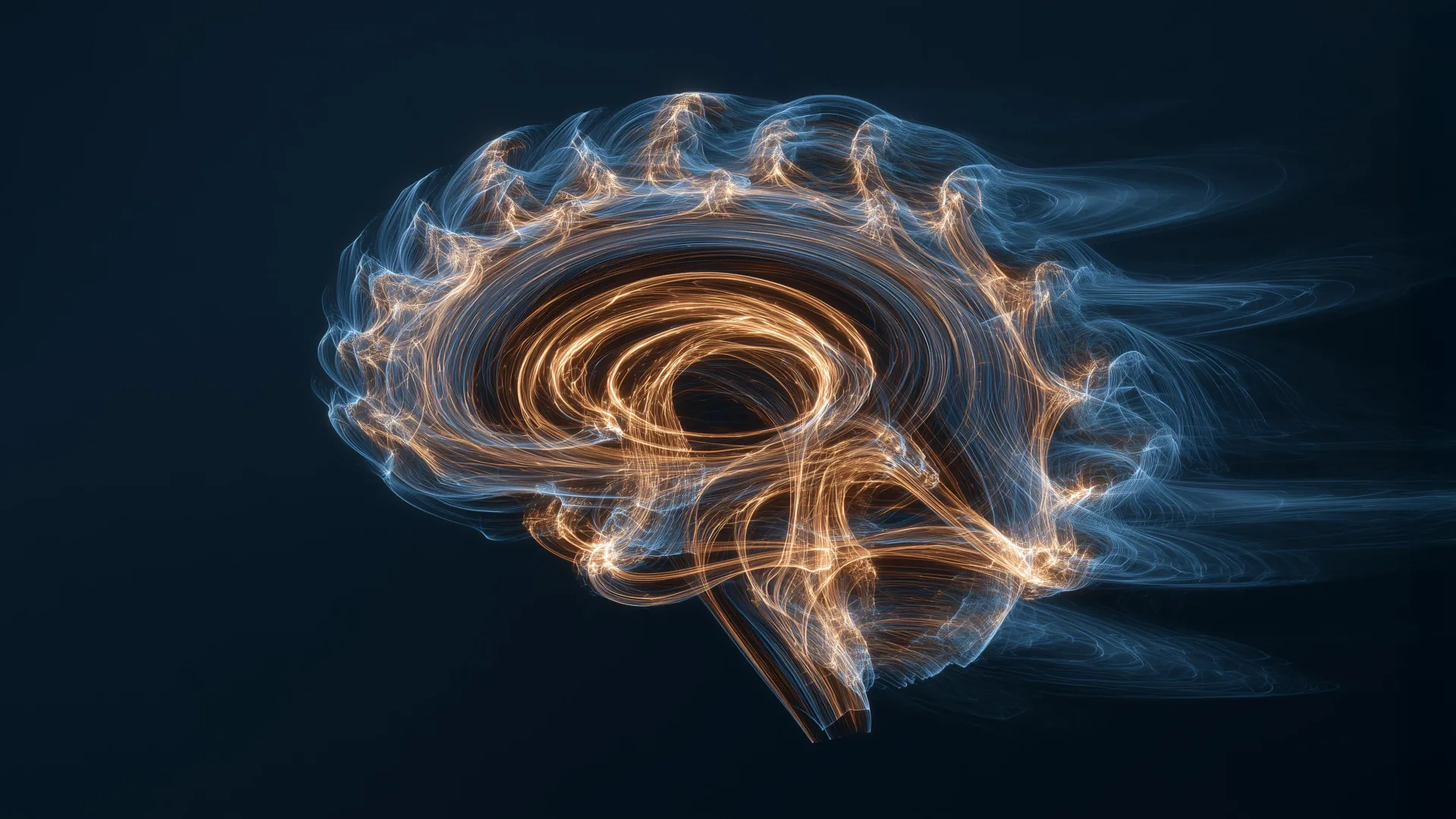MIT scientists discover how the brain spins back into focus
Rotating brain waves may be the mind’s secret mechanism for regaining focus after distraction.
- Date:
- November 4, 2025
- Source:
- Picower Institute at MIT
- Summary:
- Researchers at MIT’s Picower Institute found that rotating waves of brain activity help restore focus after distractions. In animal tests, these rotations predicted performance: full rotations meant full recovery, while incomplete ones led to errors. The brain needed time to complete the cycle, revealing a biological rhythm of cognitive recovery.
- Share:

As easily as the mind can drift off course, it also has the remarkable ability to refocus. Researchers at MIT's Picower Institute for Learning and Memory have uncovered how that process may work. In a new animal study, they found that synchronized neural activity, appearing as a rotating wave across the brain, helps guide thought back to the task at hand.
"The rotating waves act like herders that steer the cortex back to the correct computational path," said study senior author Earl K. Miller, Picower Professor in The Picower Institute and MIT's Department of Brain and Cognitive Sciences.
Tamal Batabyal, a postdoctoral researcher at the Picower Institute, led the work, which was published Nov. 3 in the Journal of Cognitive Neuroscience.
Mathematical 'rotations'…
In the experiments, animals performed a visual working memory task while occasionally encountering one of two types of distractions. As expected, these distractions disrupted performance -- sometimes leading to errors or slower reaction times when the animals needed to respond. During the task, the scientists monitored the electrical signals from hundreds of neurons in the prefrontal cortex, the brain region involved in decision-making and complex thought.
To understand how this neural activity changed over time and across different conditions (with and without distraction, and during accurate or inaccurate performances), the team used a mathematical method called subspace coding. This technique visualizes how groups of neurons coordinate their activity, revealing patterns of organization.
"Like starlings murmuring in the sky," Miller said.
After each distraction, the researchers saw a rotating pattern within the subspace, as if those "starlings" were circling back into formation after being scattered. According to Miller, this circular motion represented the brain's recovery of its coordinated state following the interruption.
The degree of rotation even predicted task performance. When the distraction did not cause a mistake, the neural activity formed a complete circle, signaling full recovery. But when the distraction disrupted performance, the circle remained incomplete (by an average of 30 degrees), and the rotations moved more slowly. That slower pace likely reflected the brain's inability to fully regain focus.
Another observation was that recovery improved when more time elapsed between the distraction and the required response. The data showed that the brain needed that interval to complete its rotation in mathematical space and restore both neural and behavioral focus.
Subspace coding revealed that neurons operate in a highly coordinated, rotational pattern that helps preserve attention. Interestingly, these rotations appeared only when distractions occurred (regardless of the type of distraction) and did not arise on their own.
…reflect physical rotations in the brain
Subspace coding is just an abstract mathematical representation of neural activity over time. But when the researchers looked at the direct physical measurements of neural activity, they found that it actually reflected a real, traveling wave rotating across the cortex. Multiple measurements showed that neural spiking activity had a spatial order with continuously changing angles, consistent with a wave of activity rotating across the cortical electrode. In fact, the actual wave rotated with the same speed as the mathematically represented one in subspace coding.
"There is no reason in principle why a rotation in this mathematical subspace should correspond directly to a rotation on the surface of the cortex," Miller said. "But it does. That suggests to me that the brain is using these traveling waves to actually do computation, analog computation. Analog computation is way more energy efficient than digital and biology favors energy efficient solutions. It's a different, and more natural, way to think about neural computation."
In addition to Miller and Batabyal, the paper's other authors are Scott Brincat, Jacob Donoghue, Mikael Lundqvist and Meredith Mahnke.
Funding for the study came from the Office of Naval Research, The Simons Center for the Social Brain, the Freedom Together Foundation and The Picower Institute for Learning and Memory.
Story Source:
Materials provided by Picower Institute at MIT. Note: Content may be edited for style and length.
Journal Reference:
- Tamal Batabyal, Scott L. Brincat, Jacob A. Donoghue, Mikael Lundqvist, Meredith K. Mahnke, Earl K. Miller. State–Space Trajectories and Traveling Waves Following Distraction. Journal of Cognitive Neuroscience, 2025; 1 DOI: 10.1162/JOCN.a.2410
Cite This Page: